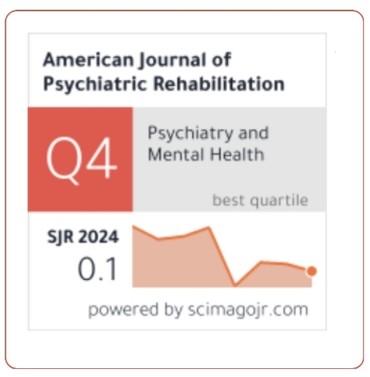Institutional Isomorphism And ESG Signalling: A Cross-National Examination Of Strategic Conformity In Sustainability Narratives
DOI:
https://doi.org/10.69980/ajpr.v28i1.442Keywords:
Institutional Isomorphism, ESG Signalling, Strategic Conformity, Sustainability Narratives, Cross-National Comparison, Corporate Governance.Abstract
Environmental, social, and governance (ESG) reporting has gained immense prominence as corporations seek legitimacy within their institutional environments. This paper investigates the role of institutional isomorphism in shaping ESG signalling, specifically how firms in different national contexts conform to ESG expectations. Utilizing institutional theory and signalling theory, this study explores the interplay between coercive, mimetic, and normative pressures in shaping sustainability narratives. We hypothesize that firms across countries adapt their ESG reporting to institutional expectations, which are influenced by the regulatory environment, market maturity, and cultural factors. A comparative analysis of ESG reports from firms in developed and emerging markets reveals that coercive pressures dominate in regions with stringent regulations (e.g., the European Union), while mimetic pressures are more prevalent in less regulated markets (e.g., Asia). The study also finds that normative pressures, driven by global reporting frameworks such as the GRI and TCFD, shape strategic conformity in ESG disclosures. This paper contributes to the understanding of cross-national differences in ESG signalling and offers managerial and policy implications for multinational corporations (MNCs) and regulators.
References
1. Aguilera, R. V., & Jackson, G. (2003). The cross-national diversity of corporate governance: Dimensions and determinants. Academy of Management Review, 28(3), 447–465. https://doi.org/10.5465/amr.2003. 10196772
2. Aguilera, R. V., & Cuervo‐Cazurra, A. (2009). Codes of good governance. Corporate Governance: An International Review, 17(3), 376–387. https://doi.org/10.1111/j.1467-8683.2009.00737.x
3. Bansal, P. (2005). Evolving sustainably: A longitudinal study of corporate sustainable development. Strategic Management Journal, 26(3), 197–218.
https://doi.org/10.1002/smj.441
4. Bartley, T. (2007). How foundations shape social movements: The construction of an organizational field and the rise of forest certification. Social Problems, 54(3), 229–255. https://doi.org/10.1525/sp.2007.54.3.229
5. Baumann-Pauly, D., Wickert, C., Spence, L. J., & Scherer, A. G. (2013). Organizing corporate social responsibility in small and large firms. Journal of Business Ethics, 115(4), 693–705. https://doi.org/10.1007/s10551-013-1827-7
6. Boiral, O. (2013). Sustainability reports as simulacra? A counter-account of A and A+ GRI reports. Accounting, Auditing & Accountability Journal, 26(7), 1036–1071.
https://doi.org/10.1108/AAAJ-04-2012-00998
7. Brammer, S., Jackson, G., & Matten, D. (2012). Corporate social responsibility and institutional theory: New perspectives on private governance. Socio-Economic Review, 10(1), 3–28. https://doi.org/10.1093/ser/ mwr030
8. Busse, C., Schleper, M. C., Weilenmann, J., & Wagner, S. M. (2017). Extending the supply chain visibility boundary: Utilizing stakeholders for identifying supply chain sustainability risks. International Journal of Physical Distribution & Logistics Management, 47(10), 873–892. https://doi.org/10.1108/IJPDLM-12-2016-0356
9. Campbell, J. L. (2007). Why would corporations behave in socially responsible ways? An institutional theory of corporate social responsibility. Academy of Management Review, 32(3), 946–967. https://doi.org/10 .5465/amr. 2007.25275684
10. Chen, S., Hung, M., & Wang, Y. (2018). The effect of mandatory CSR disclosure on firm profitability and social externalities: Evidence from China. Journal of Accounting and Economics, 65(1), 169–190.
https://doi.org/10.1016/j.jacceco.2017.11.009
11. Connelly, B. L., Certo, S. T., Ireland, R. D., & Reutzel, C. R. (2011). Signalling theory: A review and assessment. Journal of Management, 37(1), 39–67. https://doi.org/10.1177/0149206310388419
12. DiMaggio, P. J., & Powell, W. W. (1983). The iron cage revisited: Institutional isomorphism and collective rationality in organizational fields. American Sociological Review, 48(2), 147–160. https://doi.org/10. 2307/2095101
13. Eccles, R. G., Ioannou, I., & Serafeim, G. (2014). The impact of corporate sustainability on organizational processes and performance. Management Science, 60(11), 2835–2857. https://doi.org/10.1287/ mnsc.2014.1984
14. Etzion, D., & Ferraro, F. (2010). The role of analogy in the institutionalization of sustainability reporting. Organization Science, 21(5), 1092–1107.
https://doi.org/10.1287/orsc.1090.0494
15. Fifka, M. S. (2013). Corporate responsibility reporting and its determinants in comparative perspective–a review of the empirical literature and a meta‐analysis. Business Strategy and the Environment, 22(1), 1–35.
https://doi.org/10.1002/bse.729
16. Freeman, R. E. (1984). Strategic management: A stakeholder approach. Pitman.
17. Frostenson, M., Helin, S., & Sandström, J. (2012). HES strategy and business logic. Journal of Business Ethics, 110(2), 275–287.
https://doi.org/10.1007/s10551-012-1424-2
18. Gond, J. P., & Herrbach, O. (2006). Social reporting as an organisational learning tool? A theoretical framework. Journal of Business Ethics, 65(4), 359–371.
https://doi.org/10.1007/s10551-006-0007-3
19. Gray, R., Kouhy, R., & Lavers, S. (1995). Corporate social and environmental reporting: A review of the literature and a longitudinal study of UK disclosure. Accounting, Auditing & Accountability Journal, 8(2), 47–77.
https://doi.org/10.1108/09513579510146996
20. Greenwood, R., Oliver, C., Sahlin, K., & Suddaby, R. (2008). The SAGE handbook of organizational institutionalism. Sage.
21. Hahn, R., & Kühnen, M. (2013). Determinants of sustainability reporting: A review of results, trends, theory, and opportunities. Journal of Cleaner Production, 59, 5–21.
https://doi.org/10.1016/j.jclepro.2013.07.005
22. Hawn, O., & Ioannou, I. (2016). Mind the gap: The interplay between external and internal actions in the case of CSR. Strategic Management Journal, 37(13), 2569–2588. https://doi.org/10.1002/smj.2449
23. Ioannou, I., & Serafeim, G. (2012). What drives corporate social performance? The role of nation-level institutions. Journal of International Business Studies, 43(9), 834–864. https://doi.org/10.1057/jibs.2012.26
24. Jackson, G., & Apostolakou, A. (2010). Corporate social responsibility in Western Europe: An institutional mirror or substitute? Journal of Business Ethics, 94(3), 371–394.
https://doi.org/10.1007/s10551-009-0269-8
25. Jamali, D., & Neville, B. (2011). Convergence versus divergence of CSR in developing countries: An embedded multi-layered institutional lens. Journal of Business Ethics, 102(4), 599–621. https://doi.org/10.1007/ s10551-011-0830-0
26. Jennings, P. D., & Zandbergen, P. A. (1995). Ecologically sustainable organizations: An institutional approach. Academy of Management Review, 20(4), 1015–1052.
https://doi.org/10.5465/amr.1995.9512280034
27. Kolk, A. (2008). Sustainability, accountability and corporate governance: Exploring multinationals’ reporting practices. Business Strategy and the Environment, 17(1), 1–15. https://doi.org/10.1002/bse.511
28. Kolk, A., Rivera-Santos, M., & Rufin, C. (2014). Reviewing a decade of research on the “base/bottom of the pyramid” (BOP) concept. Business & Society, 53(3), 338–377. https://doi.org/10.1177/0007650312474928
29. La Porta, R., Lopez‐de‐Silanes, F., Shleifer, A., & Vishny, R. (1997). Legal determinants of external finance. The Journal of Finance, 52(3), 1131–1150. https://doi.org/10.1111/j.1540-6261.1997.tb02727.x
30. Levy, D. L., & Kaplan, R. (2008). Corporate social responsibility and theories of global governance: Strategic contestation in global issue arenas. In A. Crane et al. (Eds.), The Oxford handbook of corporate social responsibility (pp. 432–451). Oxford University Press.
31. Lozano, R., & Huisingh, D. (2011). Inter-linking issues and dimensions in sustainability reporting. Journal of Cleaner Production, 19(2–3), 99–107.
https://doi.org/10.1016/j.jclepro.2010.01.004
32. Luo, X., & Bhattacharya, C. B. (2006). Corporate social responsibility, customer satisfaction, and market value. Journal of Marketing, 70(4), 1–18. https://doi.org/10.1509/jmkg.70.4.001
33. Marquis, C., & Qian, C. (2014). Corporate social responsibility reporting in China: Symbol or substance? Organization Science, 25(1), 127–148. https://doi.org/10.1287/orsc.2013.0837
34. Matten, D., & Moon, J. (2008). “Implicit” and “explicit” CSR: A conceptual framework for a comparative understanding of corporate social responsibility. Academy of Management Review, 33(2), 404–424.
https://doi.org/10.5465/amr.2008.31193458
35. Meyer, J. W., & Rowan, B. (1977). Institutionalized organizations: Formal structure as myth and ceremony. American Journal of Sociology, 83(2), 340–363. https://doi.org/10.1086/226550
36. Milne, M. J., & Gray, R. (2013). W(h)ither ecology? The triple bottom line, the global reporting initiative, and corporate sustainability reporting. Journal of Business Ethics, 118(1), 13–29. https://doi.org/10.1007/ s10551-012-1543-8
37. Oliver, C. (1991). Strategic responses to institutional processes. Academy of Management Review, 16(1), 145–179.
https://doi.org/10.5465/amr.1991.4279002
38. Orlitzky, M., Schmidt, F. L., & Rynes, S. L. (2003). Corporate social and financial performance: A meta-analysis. Organization Studies, 24(3), 403–441. https://doi.org/10.1177/0170840603024003910
39. Parker, L. D. (2005). Social and environmental accountability research: A view from the commentary box. Accounting, Auditing & Accountability Journal, 18(6), 842–860.
https://doi.org/10.1108/09513570510627739
40. Patten, D. M. (2002). The relation between environmental performance and environmental disclosure: A research note. Accounting, Organizations and Society, 27(8), 763–773. https://doi.org/10.1016/S0361-3682(02)00028-4
41. Pfeffer, J., & Salancik, G. R. (1978). The external control of organizations: A resource dependence perspective. Harper & Row.
42. Porter, M. E., & Kramer, M. R. (2006). Strategy and society: The link between competitive advantage and corporate social responsibility. Harvard Business Review, 84(12), 78–92.
43. Rahaman, A. S., Lawrence, S., & Roper, J. (2004). Social and environmental reporting at the VRA: Institutionalised legitimacy or legitimation crisis? Critical Perspectives on Accounting, 15(1), 35–56. https://doi.org/10.1016/S1045-2354(03)00005-4
44. Rodrigue, M., Magnan, M., & Cho, C. H. (2013). Is environmental governance substantive or symbolic? An empirical investigation. Journal of Business Ethics, 114(1), 107–129. https://doi.org/10.1007/s10551-012-1329-1
45. Scherer, A. G., & Palazzo, G. (2011). The new political role of business in a globalized world: A review of a new perspective on CSR and its implications for the firm, governance, and democracy. Journal of Management Studies, 48(4), 899–931.
https://doi.org/10.1111/j.1467-6486.2010.00950.x
46. Scott, W. R. (2008). Institutions and organizations: Ideas and interests (3rd ed.). Sage Publications.
47. Suchman, M. C. (1995). Managing legitimacy: Strategic and institutional approaches. Academy of Management Review, 20(3), 571–610. https://doi.org/10.5465/amr.1995.9508080331
48. Tilt, C. A. (2007). External stakeholders’ perspectives on sustainability reporting. Accounting, Auditing & Accountability Journal, 20(5), 759–787.
https://doi.org/10.1108/09513570710779069
49. Tschopp, D., & Huefner, R. J. (2015). Comparing the evolution of CSR reporting to that of financial reporting. Journal of Business Ethics, 127(3), 565–577.
https://doi.org/10.1007/s10551-014-2054-6
50. Zadek, S. (2004). The path to corporate responsibility. Harvard Business Review, 82(12), 125–132.
Downloads
Published
Issue
Section
License
Copyright (c) 2025 American Journal of Psychiatric Rehabilitation

This work is licensed under a Creative Commons Attribution 4.0 International License.
This is an Open Access article distributed under the terms of the Creative Commons Attribution 4.0 International License permitting all use, distribution, and reproduction in any medium, provided the work is properly cited.









